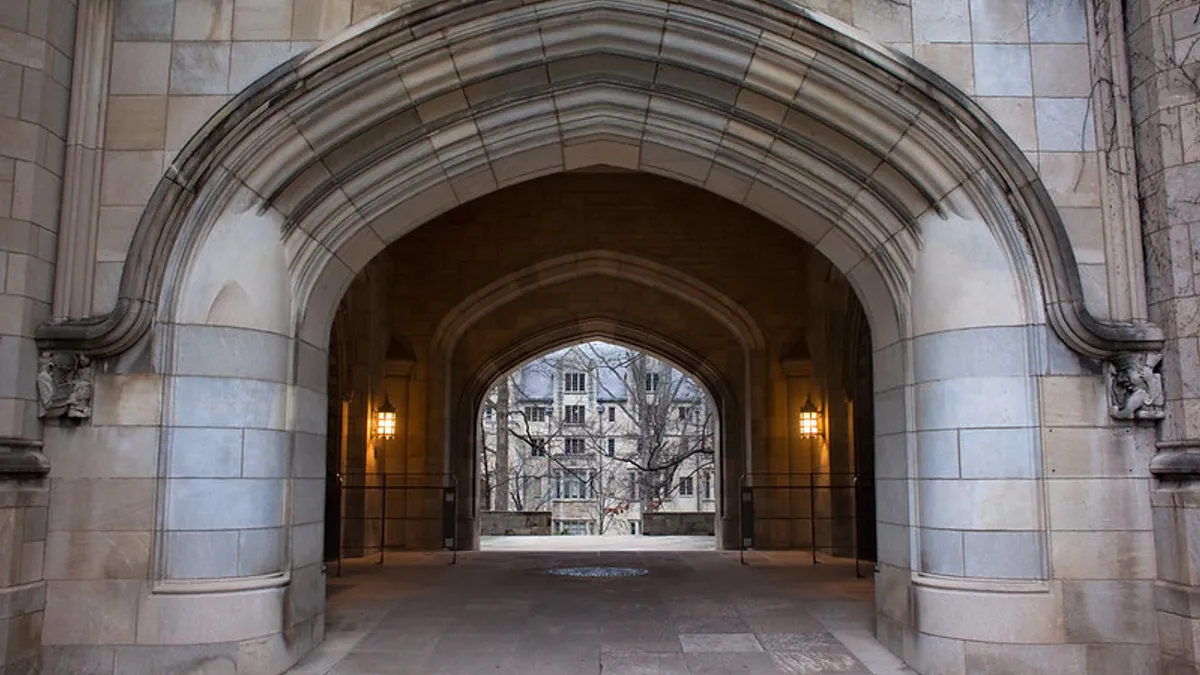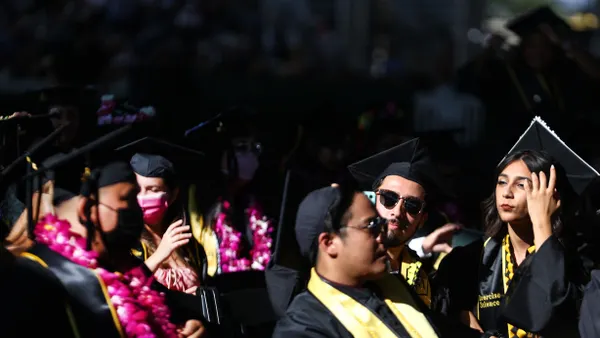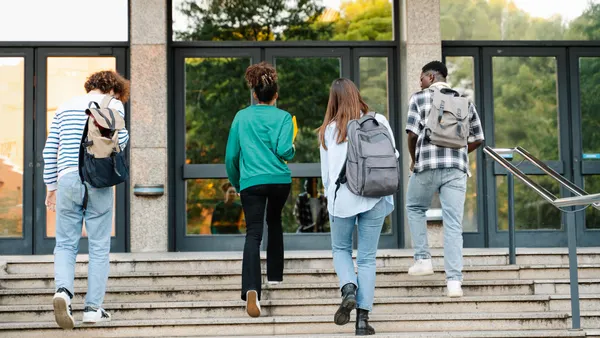Dive Brief:
-
The high school class of 2021 completed 4.8% fewer Free Application for Federal Student Aid forms than students did in the previous year, according to a new report from the National College Attainment Network.
-
The decline represents about 102,000 fewer high school seniors finishing the FAFSA as of July 2. The decrease was more pronounced in schools with large percentages of low-income, Black and Hispanic students.
-
NCAN said the data suggests another enrollment downturn could come in the fall, as last year's "catastrophic" decline in college students followed fewer FAFSA completions.
Dive Insight:
Over the two classes of 2020 and 2021, the number of high school seniors completing a FAFSA was more than a quarter-million below what NCAN expected. The organization regularly reviews FAFSA completions, but its most recent analysis covers annual changes from October to this month.
An estimated 53.3% of the class of 2021 completed the FAFSA as of July 2, according to NCAN. This is down about 2.5 percentage points from last year.
The 2021 class trailed last year's cohort of seniors in FAFSA completions through the entire period that NCAN tracked, it said. But the situation "hit rock bottom" at the end of November, when FAFSA completions had fallen 16.8% year over year, Bill DeBaun, NCAN's director of data and evaluation, said in a statement Monday.
The class of 2021 has since "clawed its way" to close the gap, and more graduating seniors could still apply for aid in the summer, the organization noted. But the decline is worrisome. The FAFSA unlocks access to state and federal aid, without which some students likely can't afford college.
High schools with higher poverty levels and those with high shares of Black and Hispanic students saw a larger decrease in FAFSA completions than other schools.
Among Title I-eligible public high schools, which enroll higher portions of low-income students, FAFSA completions dropped 6.5% from last year, compared to non-Title I-eligible schools, where the decline was 3.7%.
At high schools where more than two-fifths of students are Black and Hispanic, FAFSA completions fell more than 8%, versus only a 2.2% decline among schools with fewer Black and Hispanic students, according to NCAN.
"We warned that FAFSA completion would be bad because we knew it would be bad, and in the end: it’s bad," DeBaun said in the statement.
NCAN said the FAFSA data could forecast uncertain enrollments this fall, which follows more than a year of economic turmoil spurred by the pandemic.
More than 530 institutions in Canada, the United Kingdom and U.S. have open seats, housing and financial aid for the fall, according to a database from the National Association for College Admission Counseling. However, this is almost certainly an undercount, as colleges self-report this information, the admissions trade group has said.














